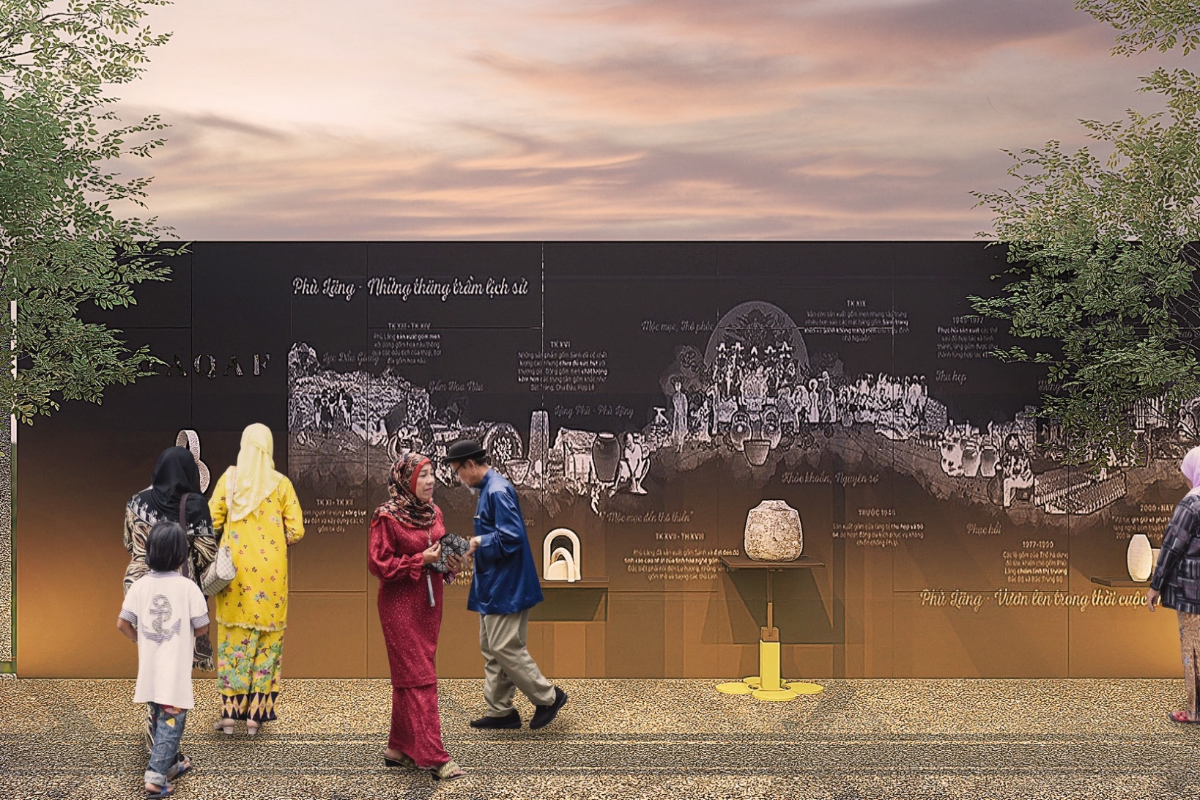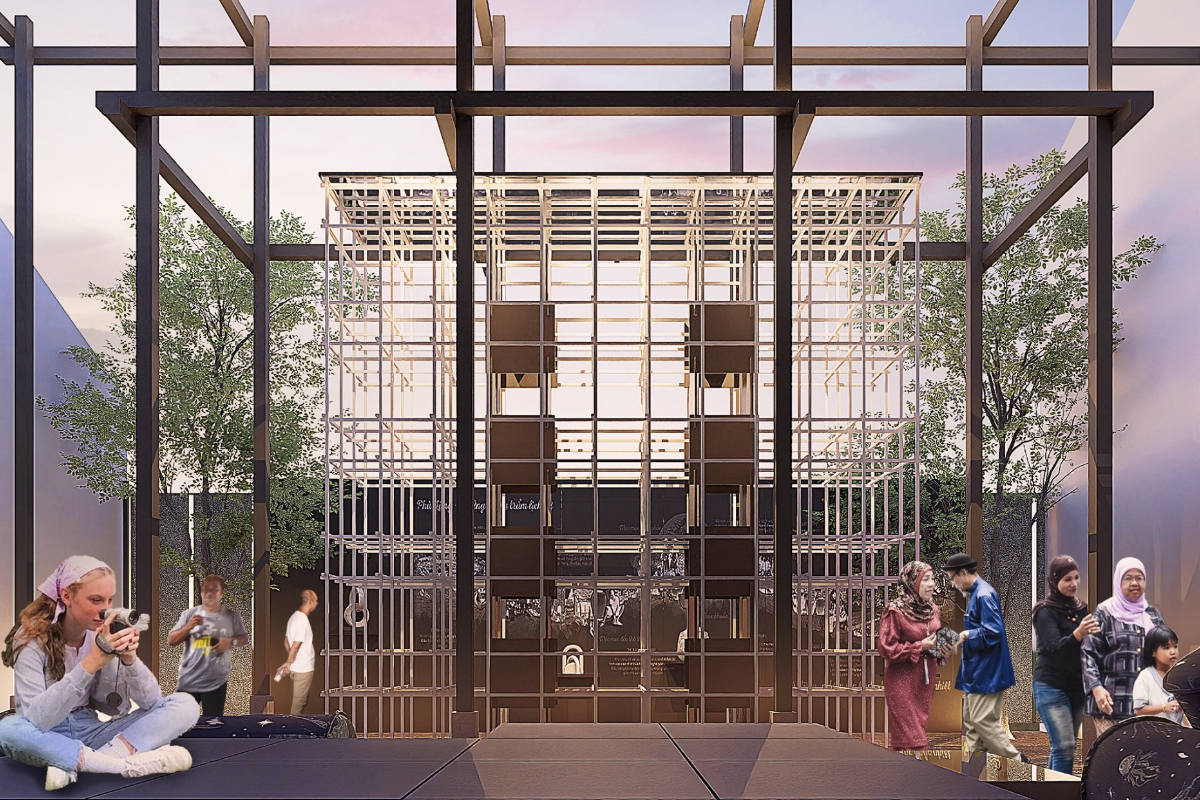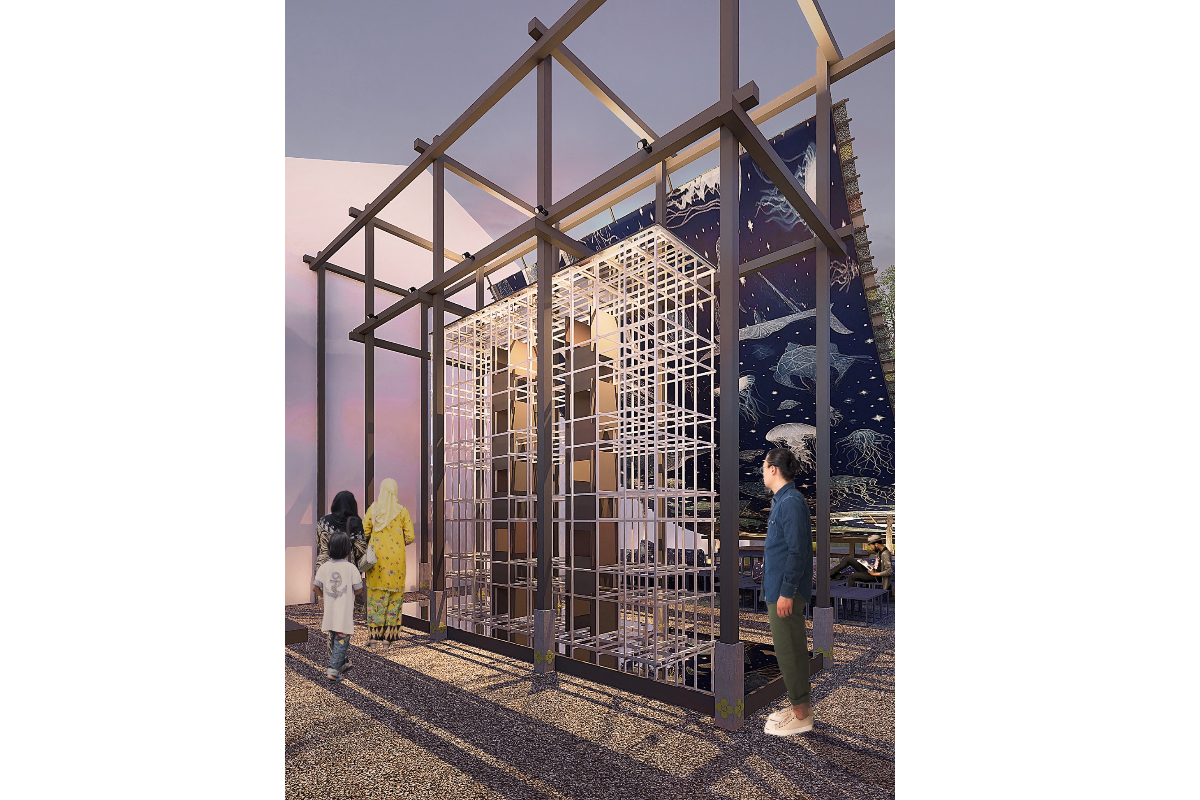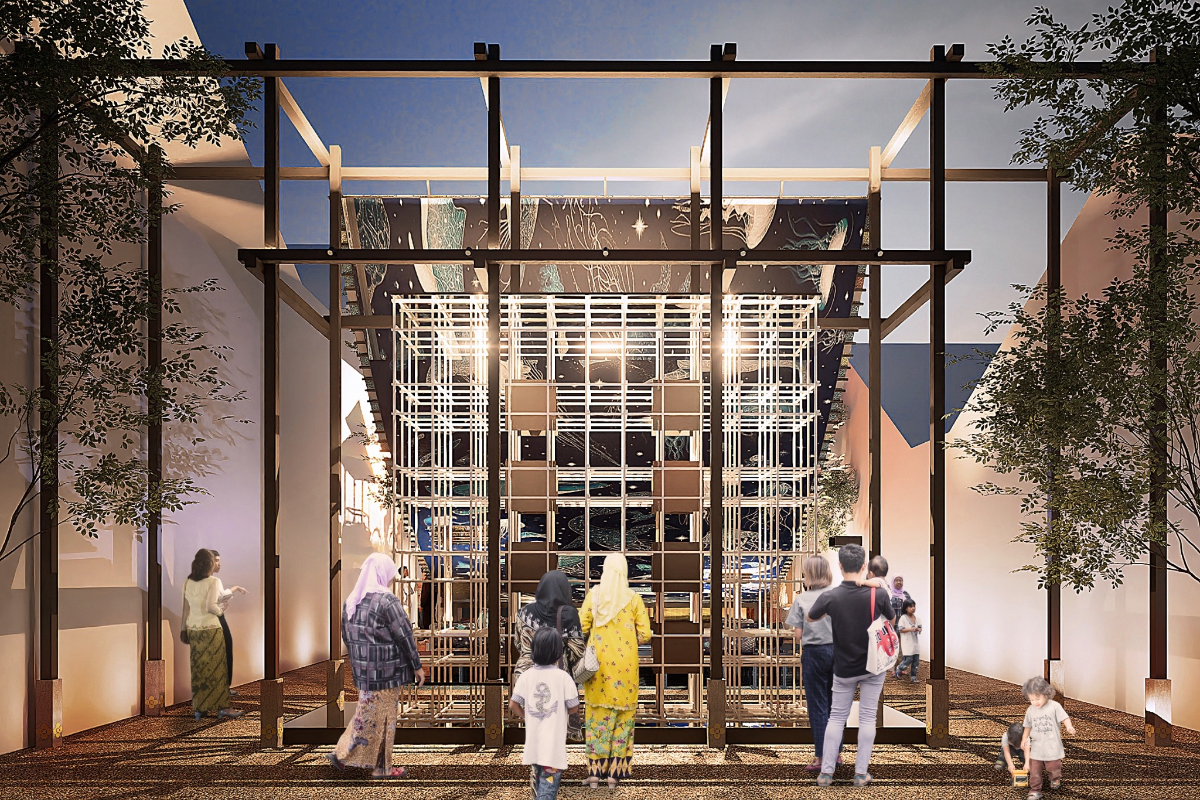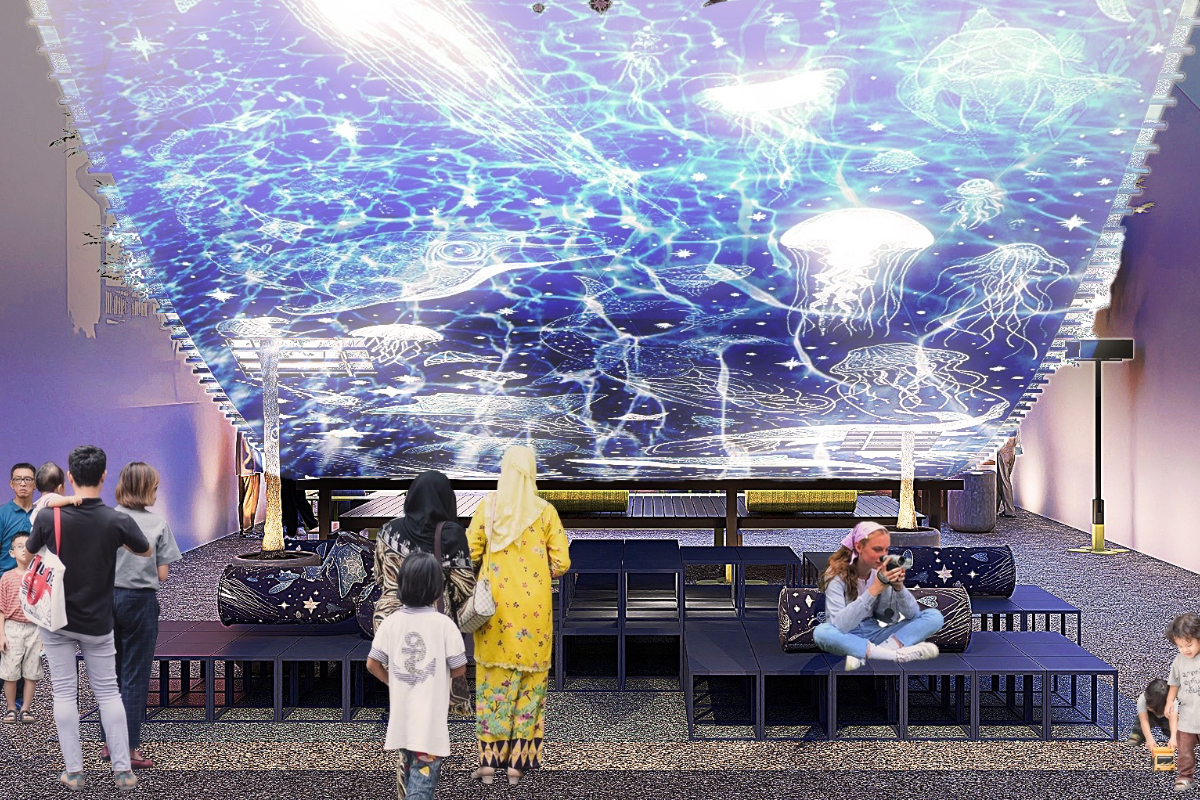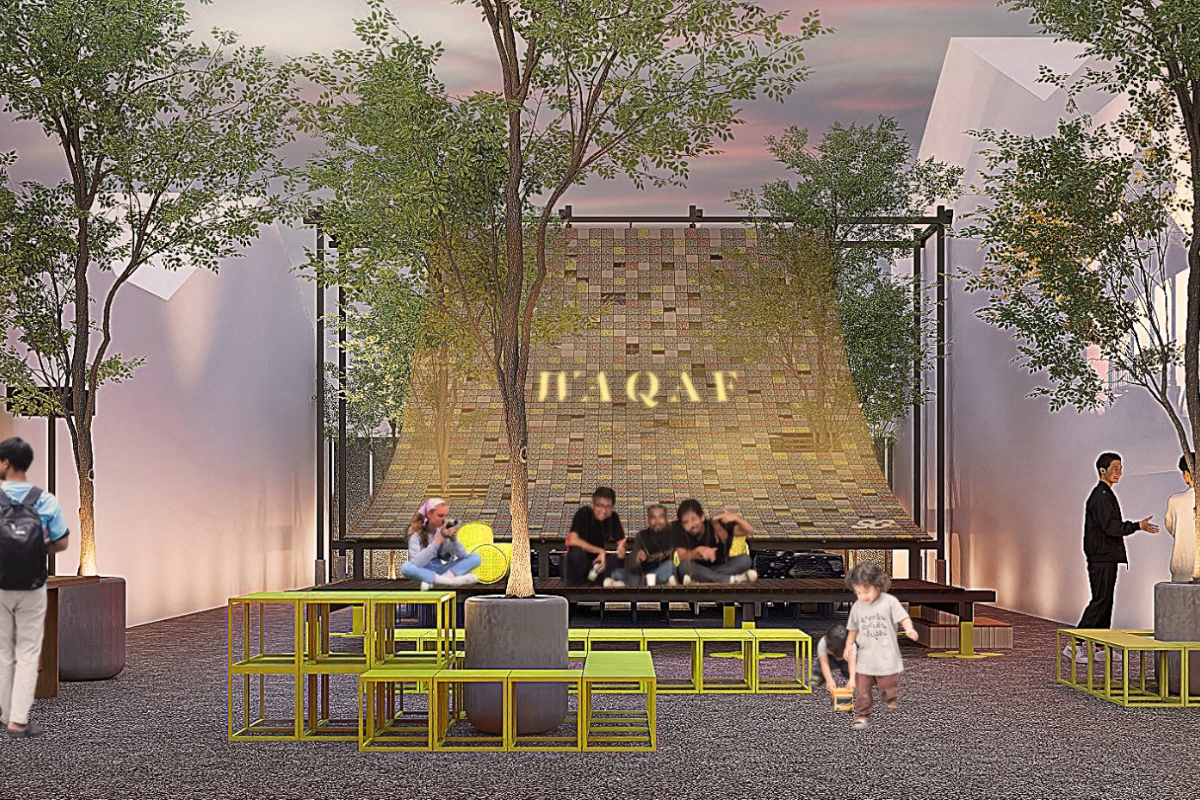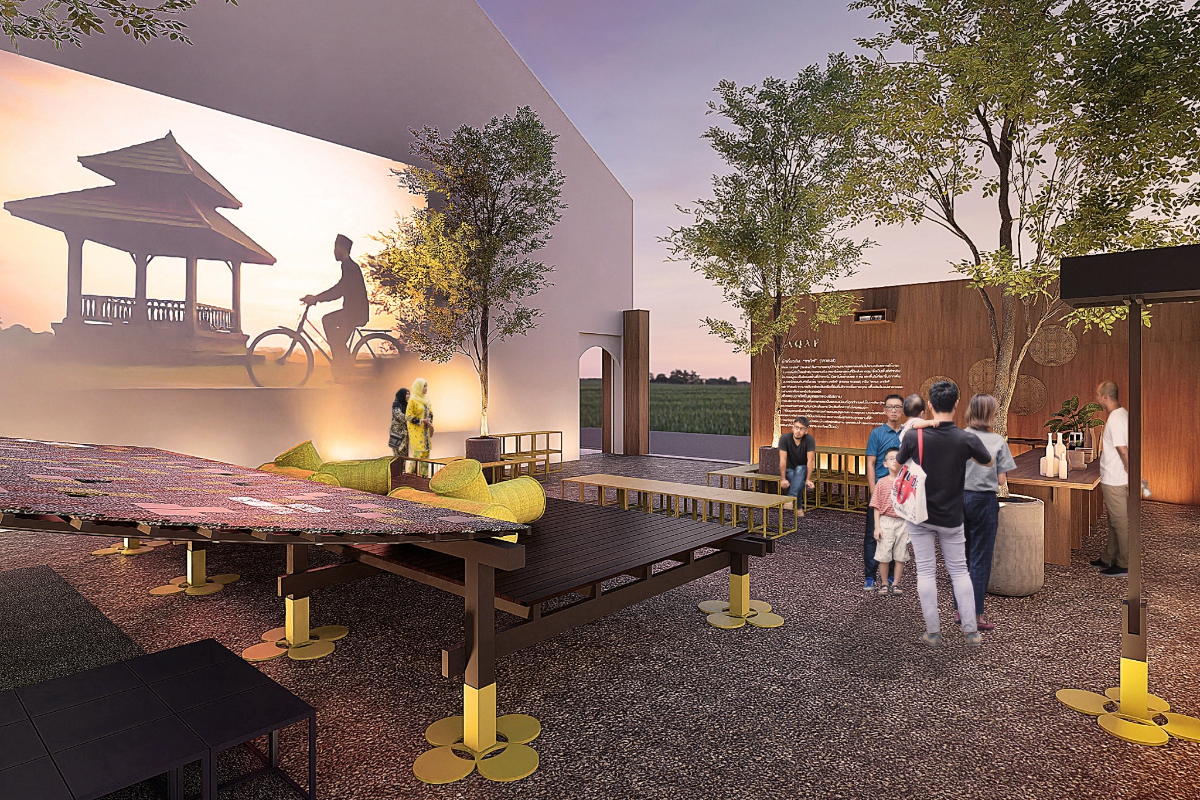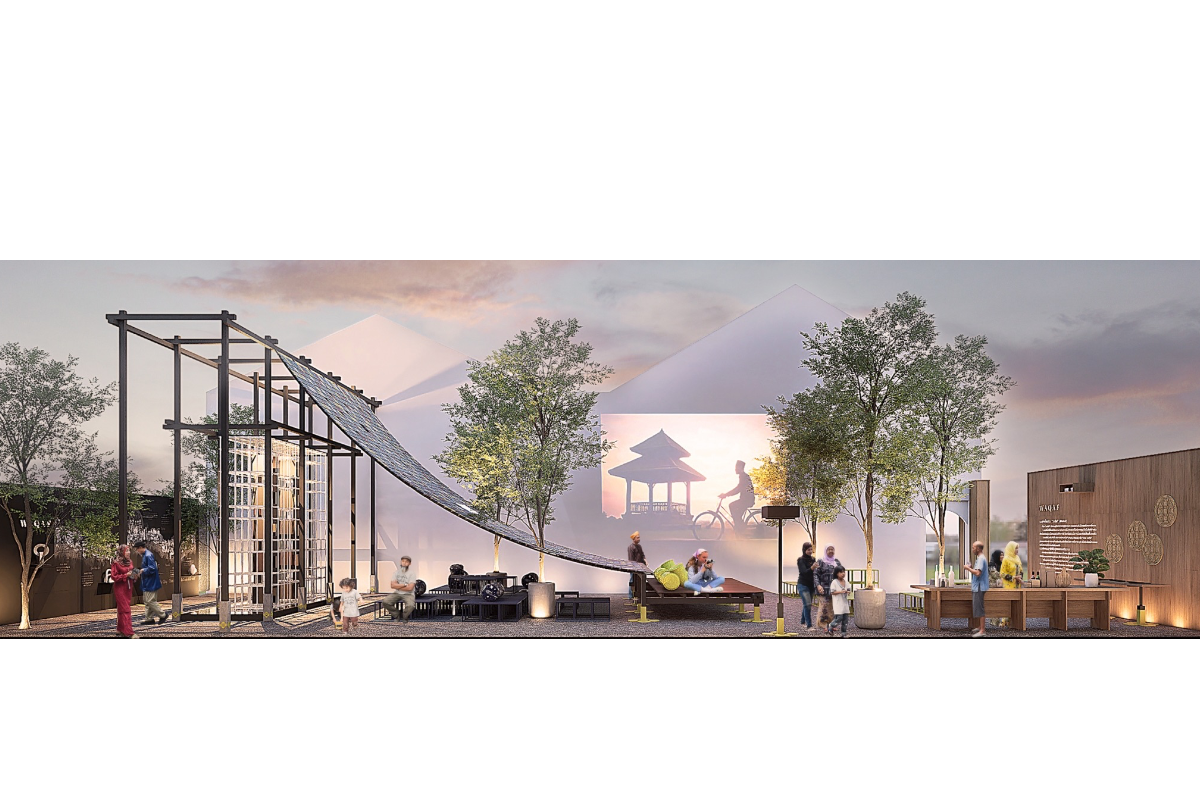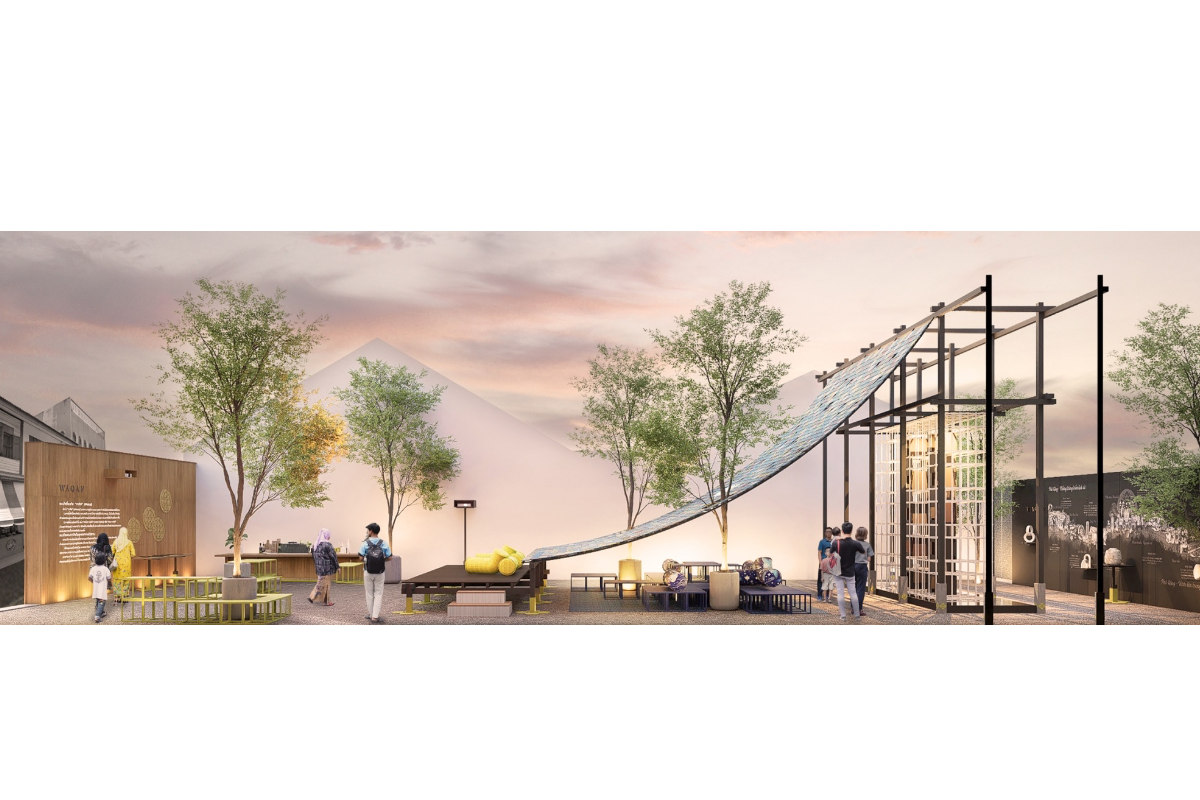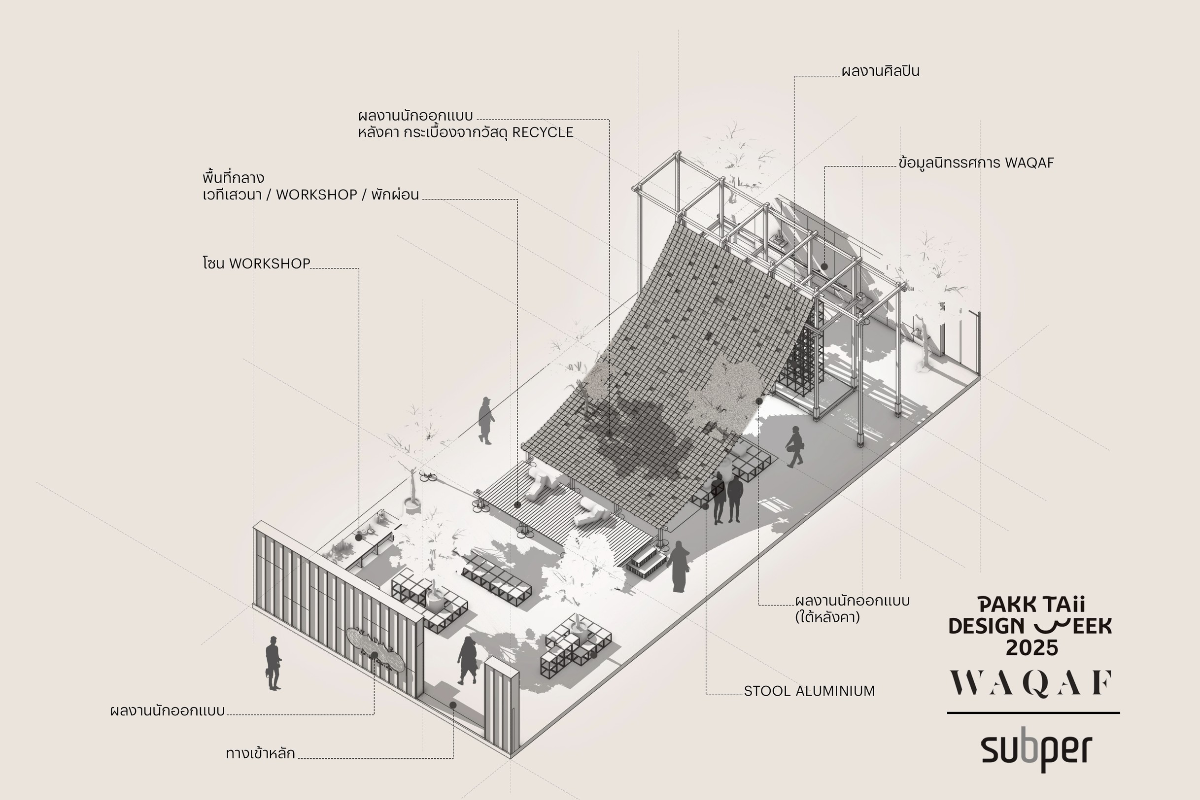Melayu Living
Waqaf
WAQAF – A Space for Contemporary Coexistence
WAQAF is a spatial experiment that reinterprets the concept of waqaf within a contemporary context. Grounded in Malay philosophy, the pavilion brings together people, interactions, and minimal architecture as a living expression of generosity, coexistence, and shared trust. It is more than a physical structure—it is a symbol of care, openness, and inclusivity for all.
The pavilion is built using reclaimed and discarded materials from the local community, transforming fragments of inequality into shared space. Every component—be it a seat, an open field, or a shade structure—carries meaning. WAQAF becomes an invitation not only to observe, but to participate, connect, and reflect.
At the heart of the pavilion lies the “leaky roof”—a powerful installation by the collective Talay Jorn. It is formed from colorful recycled tiles, arranged like a roof that appears beautiful and functional. But when you look up, you realize: it offers no real protection from sun or rain. The roof is a metaphor—for solutions that appear complete but fall short. For the systems that design waste into our everyday lives.
These tiles were made from real waste gathered along the shores of Pattani:
Flip-flops washed ashore
Bottle caps from roadside stalls
Lighters buried in sand
Abandoned wheels
Secondhand clothing no one claimed
This is not simply “upcycled material”—it is evidence. A record of systemic neglect. WAQAF does not attempt to hide these realities, but instead places them in full view—asking:
“Can recycling really solve the problem?”
“Is upcycling enough?”
“If circularity only happens at the end, is it truly circular?”
WAQAF is more than a showcase.
It is a record of effort, a reflection of lived inequality, and a call to reimagine how we coexist—starting not from a perfect shelter, but from a broken shade that makes us look up and begin to question.
Alongside the pavilion, visitors are invited to participate in workshops and open conversations hosted by the Melayu Living Collective, where waqaf is explored as a form of soft infrastructure—not made of concrete or steel, but of relationships, values, and the cultural scaffolding that sustains inclusive urban life.
📍 Experience “WAQAF – A Space for Contemporary Coexistence” at the Pattani Provincial Showcase
Part of Pakk Taii Design Week 2025
🗓️ 28 August – 7 September 2025
📍 at the courtyard of Songkhla Wittayamulnithi School, Nang Ngam Road, Songkhla Old Town

